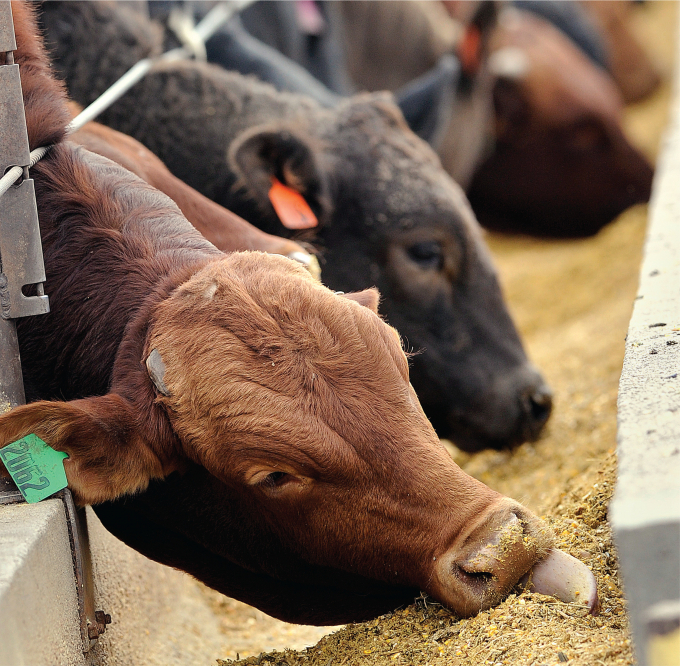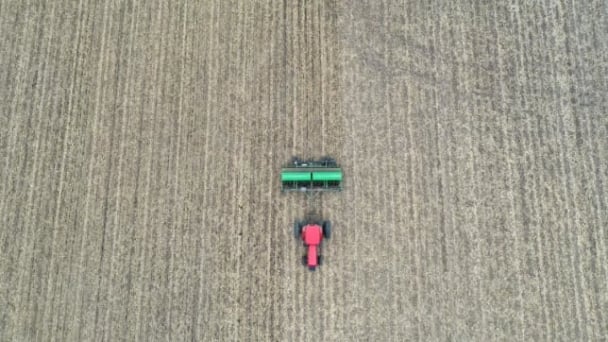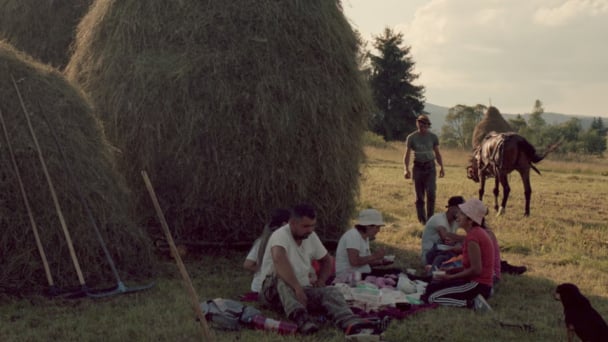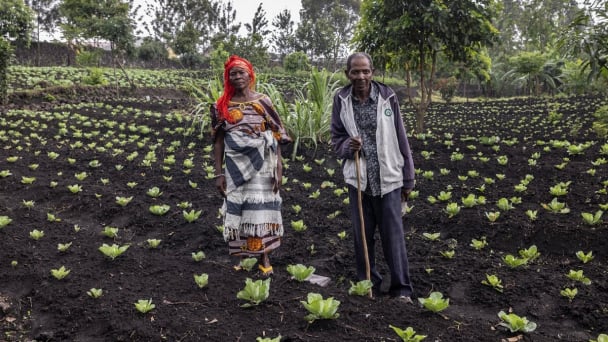April 15, 2025 | 20:40 GMT +7
April 15, 2025 | 20:40 GMT +7
Hotline: 0913.378.918
April 15, 2025 | 20:40 GMT +7
Hotline: 0913.378.918

Feedyards face added expenses to feed cattle longer and with less energy-rich diets to reduce the risk of liver abscesses when not using antibiotics. Photo: AP
(1). RWA is a credence attribute that cannot be easily verified by consumers (2). Instead, they must rely on producers, retailers, third-party certifiers, or government regulators to ensure that these claims are valid. Meat labels in the United States, one of the leading beef-producing and -exporting nations, must be approved by the US Department of Agriculture (USDA). Although USDA-approved labels give RWA claims credibility and value in the marketplace (3), the agency does not require empirical antibiotic testing to validate them. Absent verification, there are incentives for parties throughout the supply chain to cheat or limit scrutiny (4). We present empirical evidence that some beef cattle processed for the RWA market have been administered antibiotics and propose policies to reform the system.
Consumers choose RWA meats for both private and public benefits. Some consumers make this choice because they believe it is safer and healthier for them. Others may choose RWA products to support market-based efforts to reduce antibiotics in food-animal production and preserve the effectiveness of these critical medicines (5). However, neither public nor private benefits can be achieved if RWA labels are applied to animals that have been treated with antibiotics.
RWA label claims that are approved by the USDA through the Food Safety Inspection Service (FSIS) include “Raised Without Antibiotics,” “No Antibiotics Administered,” “No Added Antibiotics,” “Raised Antibiotic Free,” and “No Antibiotics Ever.” Producers wishing to market their products with one of these labels must submit (i) a description of controls to ensure that animals are not given antibiotics; (ii) a protocol for tracing and segregating RWA products; (iii) a protocol for identifying and segregating nonconforming animals (i.e., those treated with antibiotics); and (iv) a signed affidavit describing how the animals were raised to support label claims (6). The USDA does not conduct or mandate empirical antibiotic testing for these labels.
Although the USDA occasionally tests for antibiotic residues in meat animals, these tests are not conducted to verify RWA claims. Among the more than 9 billion animals that are slaughtered in the US for meat each year, the USDA tests fewer than 7000 for antibiotics through the US National Residue Program. Technicians from this program conduct tests to determine whether antibiotics in target tissues exceed their maximum residue limits (a threshold defined as safe for public consumption) and effectively blind themselves to antibiotics below these concentrations (7). The National Residue Program is not designed to assess RWA claims and is not used to do so.
Other programs, including the Global Animal Partnership’s Animal Welfare Certified Program and the USDA’s National Organic Program, prohibit the use of antibiotics in beef cattle and lend credence to RWA claims (8, 9). Beef products are often branded with multiple label claims, including RWA, Animal Welfare Certified, and Organic, which implies added layers of scrutiny. However, none of these programs require empirical antibiotic testing.
RWA cattle generate increased price premiums over conventional products at every step along the supply chain (fig. S1). There are also increased costs associated with RWA production, so these premiums should not be interpreted simply as added profit. For example, cow–calf operators—the farmers and ranchers who raise beef cattle—spend more money on supplements and spend more time weaning calves without antibiotics. Feedyards—the companies that fatten cattle for market—pay higher prices for RWA cattle and then take on the added expenses of feeding animals longer with less energy-rich diets to reduce the risk of liver abscesses without antibiotics (10).
Cattle producers use antibiotics to treat, control, and prevent infections. In the absence of robust verification, the prospect of sick animals creates a dilemma: Producers must decide whether to withhold antibiotics and potentially sacrifice animal welfare; openly administer antibiotics and forgo investments and premiums; or covertly administer antibiotics and enjoy the benefits of treatment without the costs. From the perspectives of animal welfare and consumer protection, openly treating animals is the best option; however, this places a financial burden on cow–calf operators and feedyards (11). This also creates supply disruptions for processors and retailers, who can experience lost revenue, lower plant utilization, and reduced customer confidence. The stakes are highest for retailers that exclusively sell RWA meats as they cannot substitute with conventionally labeled products when supplies are disrupted. This could mean costly periods with empty shelves and missing menu items. In a system characterized by lax verification and enforcement, these financial incentives may be difficult to overcome.
In a well-functioning market, concern for one’s reputation should counterbalance the incentives to cheat. In the case of RWA labels, the USDA grants credence and also confers a degree of liability protection. The law states and courts confirm that the USDA has sole authority to determine whether meat labels are truthful and accurate. Thus, an approved USDA label cannot be deemed false or misleading by any entity other than the USDA, even when the evidence suggests otherwise (12). This changes every player’s risk calculation. For example, retailers can avoid doing their own quality control by relying on the legal safe harbor granted by an approved USDA label. Indeed, meat companies refer to the USDA’s duty to review and approve meat labels as a means of preempting consumer protection laws when challenged in court for mislabeling products (13). These incentives further limit scrutiny on a set of claims that are otherwise relatively easy to confirm.
To determine whether antibiotic-treated animals are making their way into the RWA supply chain, we tested for antibiotics in urine from beef cattle being slaughtered for the RWA market. All of the cattle were part of a “No Antibiotics Ever” program, with a subset produced under the third-party–audited Global Animal Partnership program (see supplementary materials). Using a rapid immunoassay that screens for 17 antibiotics commonly administered in feed and water, we sampled animals from every lot of RWA cattle delivered for processing at a single slaughter facility over the course of 7 months (mean lot size = 122 cattle; mean number of animals tested per lot = 2). A total of 699 animals were tested from 312 lots and 33 different RWA-certified feedyards (see the figure). The 312 lots sampled in this study included 38,219 head of cattle, representing ∼12% of US RWA beef production for this period.
Three feedyards (9%) had multiple lots in which all samples tested positive for antibiotics; 4 feedyards (12%) had all samples test positive in a single lot; 7 (21%) had a positive sample in more than one lot; and 14 (42%) had at least one animal test positive (see the figure). Lots with at least one positive test represented ∼15% of the RWA cattle processed at the slaughter facility during the study period (see the figure). These findings provide empirical evidence that a material portion of beef products currently being marketed with RWA labels is from cattle that were treated with antibiotics.
These findings suggest that today’s RWA labels lack integrity. Although our testing was limited to beef cattle, other meat and poultry sectors are vulnerable to similar incentives. To protect consumers and restore the integrity of RWA labels, we recommend the following policy reforms grounded in the literature, which has shown that testing programs with robust standards and public disclosure can overcome incentives to cheat.
The USDA should establish a rigorous verification system to ensure that RWA claims are truthful and accurate, or they should cease approving these labels. For meaningful verification, the USDA should conduct or require continuous, on-site empirical testing for antibiotics on a meaningful number of animals from every lot delivered for processing. For testing to be effective, the USDA must move beyond maximum residue levels and use sensitive, real-time technologies that identify animals that have been treated with antibiotics. Lots testing positive should be rerouted and sold on the conventional market. Positive lots should be tracked and published on a public ledger. Repeat offenders should be excluded from supplying animals for RWA programs until they can demonstrate that they have taken meaningful steps to eliminate undisclosed antibiotic use.
To ensure that animal welfare is not pitted against the financial welfare of producers, the USDA must eliminate the financial disincentives for treating sick animals. We recommend that the USDA create a fund to compensate RWA producers for lost premiums if they are periodically forced to administer antibiotics and segregate animals from the RWA market. To offset expenses of robust verification and animal-welfare compensation, we recommend that the USDA implement a RWA label user fee. This should help ensure that these new costs are passed to RWA producers, retailers, and consumers of RWA products rather than placing the burden on the general public.
Until the USDA acts, additional studies such as ours could weaken confidence in the RWA labels and decrease consumers’ willingness to pay for these products. Retailers can limit these undesirable outcomes by taking responsibility for the integrity of the food they sell and implement a robust, industry-wide standard that incorporates empirical testing, strict enforcement, and transparent administration.
Growing demand for RWA meats and poultry has the potential to curb antibiotic use in food-animal production; however, the integrity of the USDA’s RWA labels is being undermined by lax verification and enforcement. Until either the USDA acts to rigorously verify RWA claims or retailers eliminate their own safe harbor of ignorance, consumers should not rely on the accuracy of these labels.
Acknowledgments
We thank M. Ollinger and T. Roberts for reviewing the manuscript and for providing valuable insights. We also thank S. Levitan for data visualization, manuscript review, and editing. Antibiotic testing was funded by Food In-Depth Inc. All data, except for the identities of the feedyards and processing plant, are available in the supplementary materials.
(Science)

(VAN) 169 lotus seeds selected by the Vietnam Academy of Agricultural Sciences were carried into space by Vietnamese-American astronaut Amanda Nguyen.

(VAN) Tariffs are making life more expensive for John Pihl. He's been farming in Northern Illinois for more than 50 years.

(VAN) European and American farmer organisations are concerned about the import tariffs that the United States introduced on 9 April for products from the European Union. This makes them 20% more expensive.

(VAN) Global poultry trade is expected to remain strong amid relatively tight global protein supply and growing consumption, RaboResearch concludes in its latest animal protein report.

(VAN) Traditional methods benefit hundreds of species but as new agricultural techniques take over, the distinctive haystacks mark a vanishing way of life.

(VAN) The nation’s top banks are quietly advising their clients on how to build a financial life raft - or perhaps life yacht - from the wreckage of runaway climate change.

(VAN) From FAO Office in the Democratic Republic of the Congo.